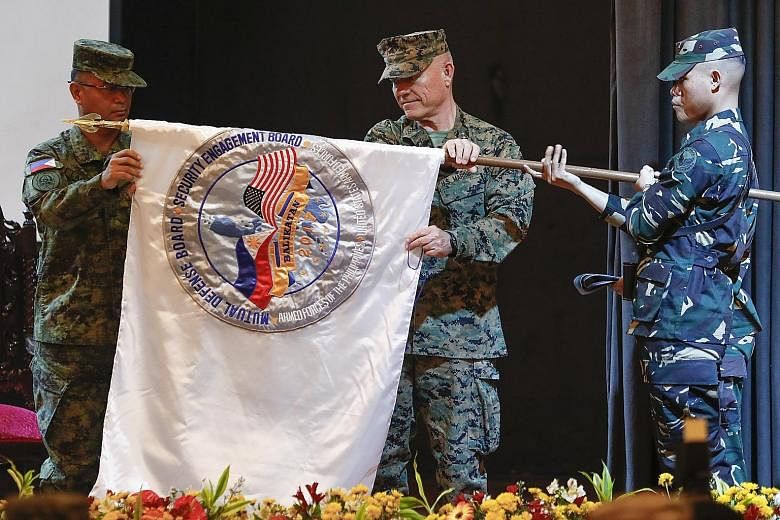Philippine and US troops yesterday began a scaled-down version of their annual "Balikatan" military exercise that this year focuses on disaster response and counter-terrorism, instead of external threats.
"The political authorities give the guidance to us, what is the priority at this point in time … The priority of (President Rodrigo Duterte) is HADR (humanitarian assistance and disaster relief) and counter-terrorism. So, those are the things we are focusing on now," Lieutenant-General Oscar Lactao, Balikatan exercise director on the Philippine side, said at a news conference.
Mr Duterte had earlier sought to scrap live-fire drills and war games near the South China Sea from this year's Balikatan - a Tagalog word meaning "shoulder to shoulder" - to appease China.
China has viewed military exercises in the region involving the US and its allies as part of Washington's policy of containment. It described last year's Balikatan as "fear-mongering and untimely", claiming it was meant as a veiled warning from the US that China's claims in the South China Sea would not go unchallenged.
But since he took office last year, Mr Duterte has been pivoting towards China, and moving away from the US. He still nurses grudges over what he considers personal insults by the US, including a snub by former president Barack Obama, and continues to chafe at US criticism of the thousands killed in his anti-drugs war.
China, on the other hand, has thrown its unconditional support behind Mr Duterte's war, and has responded to his pivot with billions of dollars' worth of investment pledges for his infrastructure programme.
Only 5,400 US and Filipino soldiers are participating in this year's Balikatan, barely half of last year's 11,000. The US is sending only 2,600 soldiers. The drills end on May 19.
"We are following a one-scenario concept. We are working on a notional event, which is a massive storm from the Pacific, hitting the eastern part of Visayas and moving towards Luzon," said Major Celeste Frank Sayson, Balikatan public affairs head.
Lieutenant-General Lawrence Nicholson, the US Balikatan exercise director, said next year could see larger exercises.
"If you look back to 33 years of Balikatan, they are all different and there are a number of ways which it can change. It can get bigger, it can get smaller. Of course, we all hope it gets bigger," he said.
Mr Prashanth Parameswaran, a security and foreign policy expert at Tufts University, said it is "still early days, with new leaderships on both sides, and things could change further down the line in Manila's ties with the major powers as they have often done in the past".
Last year's exercises were held across the Philippines, with at least one drill staged in waters off Palawan province, just outside the South China Sea. A mobile multiple rocket system was also used for the first time during the exercises.

